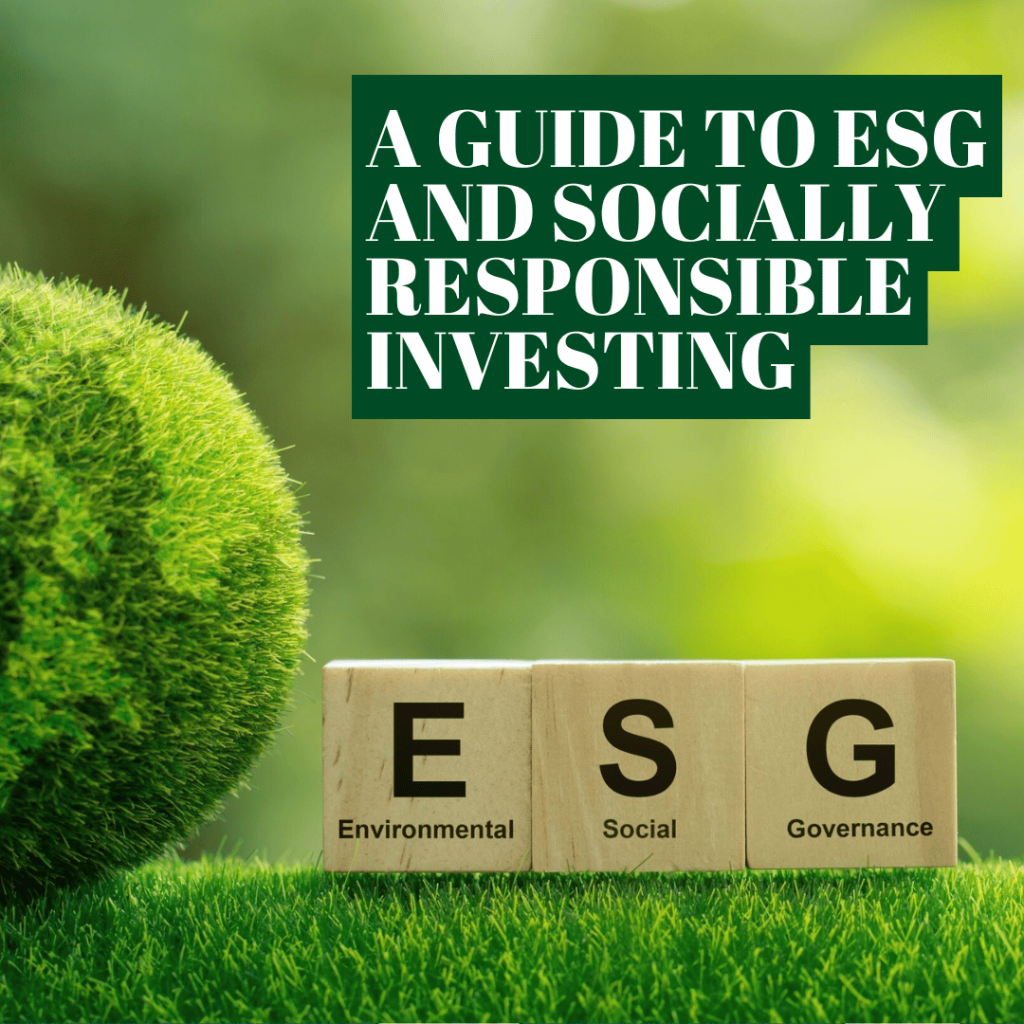Investing with Impact: A Guide to ESG and Socially Responsible Investing

Advertisements
In an increasingly interconnected world, where global challenges like climate change, social inequality, and corporate governance failures dominate headlines, investors are seeking more than just financial returns.
A growing movement is reshaping the investment landscape: Impact Investing, often discussed through the lenses of Environmental, Social, and Governance (ESG) criteria and Socially Responsible Investing (SRI).
In the United States, this approach has moved from a niche interest to a mainstream phenomenon, offering individuals and institutions the opportunity to align their portfolios with their values, while still pursuing competitive financial performance.
What is ESG Investing?
ESG investing evaluates companies and countries based on their performance in three key areas:
- Environmental (E): This criterion assesses a company’s impact on the natural world. It includes factors like carbon emissions, waste management, water usage, energy efficiency, deforestation policies, and the use of renewable resources. For example, an “E” focused investor might seek out companies with low carbon footprints or those investing heavily in clean energy technologies.
- Social (S): This focuses on a company’s relationship with its employees, suppliers, customers, and the communities where it operates. Key factors include labor practices (e.g., fair wages, safe working conditions), diversity and inclusion, human rights, product safety, data privacy, and community engagement. An “S” focused investor might avoid companies with a history of labor disputes or prioritize those known for strong employee benefits.
- Governance (G): This refers to a company’s leadership, internal controls, audits, and shareholder rights. It looks at factors like board diversity, executive compensation, transparency, shareholder rights, and anti-corruption policies. A “G” focused investor would look for companies with independent boards and ethical business practices.
ESG analysis goes beyond traditional financial statements, aiming to identify risks and opportunities that may not be apparent from standard accounting metrics alone.
What is Socially Responsible Investing (SRI)?
Socially Responsible Investing (SRI) often overlaps with ESG but typically starts with a more values-driven approach.
It involves choosing investments based on a combination of financial and ethical considerations. SRI frequently employs screening methodologies:
- Negative Screening: This is the most common form, where investors exclude companies or industries that do not align with their values. Common exclusions include companies involved in tobacco, firearms, gambling, alcohol, fossil fuels, or controversial weapons.
- Positive Screening: This involves actively seeking out companies that are leaders in ESG performance, contribute positively to society, or operate in industries that promote sustainability (e.g., renewable energy, sustainable agriculture).
While ESG emphasizes a company’s operational performance on sustainability factors, SRI often begins with a moral or ethical stance on certain industries or practices.
The Evolution of Impact Investing in the U.S.
The roots of socially conscious investing in the U.S. can be traced back to the 18th century, with early religious groups avoiding investments in slave trade or war.
The anti-apartheid movement of the 1980s significantly popularized divestment as a tool for social change.
Today, the growth of impact investing is driven by several factors:
- Growing Investor Awareness: A deeper understanding of the interconnectedness of corporate practices and societal well-being.
- Millennial and Gen Z Influence: Younger generations are particularly keen on making their money work for social and environmental good.
- Increased Data and Transparency: Better data availability and reporting on ESG metrics.
- Performance Evidence: Mounting evidence suggests that ESG integration does not necessarily sacrifice financial returns and can even enhance them.
- Product Availability: A proliferation of ESG-focused funds, ETFs, and other investment vehicles makes it easier for average investors to participate.
Why Invest with Impact in the U.S.?
Beyond the obvious ethical appeal, there are compelling reasons why investors in the U.S. are increasingly turning to impact investing:
- Competitive Financial Returns: The common misconception that ESG sacrifices returns has largely been debunked. Studies by organizations like Morningstar and MSCI often show that ESG funds can perform comparably to, or even outperform, their traditional counterparts over the long term. Companies with strong ESG practices may be more resilient and better managed.
- Risk Mitigation: Companies with poor ESG performance face various risks: regulatory fines (environmental infractions), reputational damage (labor abuses), lawsuits, and consumer boycotts. Integrating ESG factors helps investors identify and mitigate these non-financial risks, leading to more stable and sustainable returns.
- Alignment with Values: For many, investing is no longer just about profit; it’s about making a positive difference. Impact investing allows individuals to ensure their capital supports companies that align with their personal ethical and moral beliefs.
- Long-Term Growth Potential: Companies that prioritize sustainability, ethical labor, and strong governance are often better positioned for long-term growth in a world grappling with resource scarcity, climate change, and social demands. They are more likely to attract top talent, innovate, and adapt to evolving regulations.
- Shareholder Advocacy: Even without direct control, investing in companies allows shareholders to engage in shareholder advocacy, influencing corporate behavior through proxy voting and proposals on ESG issues.
How to Invest with Impact in the U.S.: Practical Approaches
The U.S. market offers several avenues for impact investing:
ESG Mutual Funds and ETFs: This is the easiest entry point for most investors. Fund providers like BlackRock, Vanguard, Fidelity, and Calvert offer a wide range of Exchange-Traded Funds (ETFs) and mutual funds specifically designed to track ESG indices or invest in companies meeting certain ESG criteria. Look for funds with strong ESG ratings from third-party evaluators like Morningstar or MSCI.
Individual Stocks: For those who prefer to pick individual stocks, in-depth research is required.
Look for companies that genuinely integrate ESG principles into their core business strategy, not just those with good marketing. Utilize ESG ratings provided by research firms.
Community Investing & CDFIs: Invest directly in local communities through Community Development Financial Institutions (CDFIs).
These are financial institutions (banks, credit unions, loan funds) dedicated to providing affordable financial services to underserved communities.
Your money directly supports local businesses, affordable housing, and community development projects.
Impact Bonds:
- Green Bonds: Issued by governments, banks, or corporations to finance environmentally friendly projects (e.g., renewable energy, sustainable land use).
- Social Bonds: Fund projects with positive social outcomes (e.g., affordable housing, healthcare, education).
Shareholder Advocacy: If you own shares directly or through certain funds, you can vote on shareholder proposals related to ESG issues at company annual meetings.
This is a powerful way to influence corporate governance and environmental practices.
Tips for U.S. Investors Looking to Invest with Impact
- Define Your Values: Clearly identify which environmental, social, and governance issues are most important to you.
- Do Your Homework: Research funds and companies thoroughly. Look beyond marketing materials to understand their actual impact and how they measure it. Utilize independent ESG ratings.
- Diversify Your Portfolio: Don’t put all your eggs in one basket. Even with impact investing, diversification across different asset classes, sectors, and geographies remains crucial for managing risk.
- Consider Fees: Pay attention to the expense ratios of ESG funds. High fees can eat into your returns.
- Consult a Financial Advisor: A financial advisor specializing in socially responsible investing can help you tailor a portfolio that aligns with both your financial goals and your values.
Related content

Best High-Yield Savings Accounts in the US in 2025

Best Credit Cards with No Foreign Transaction Fees: Ideal for Frequent Travelers

The Credit Card Churning Phenomenon in the US: Is It Legal? Is It Worth It? What Are the Risks?

The Complete Beginner’s Guide: How to Use Your First Credit Card in the US Responsibly

0% APR Credit Cards: How to Take Advantage and What Traps to Avoid
